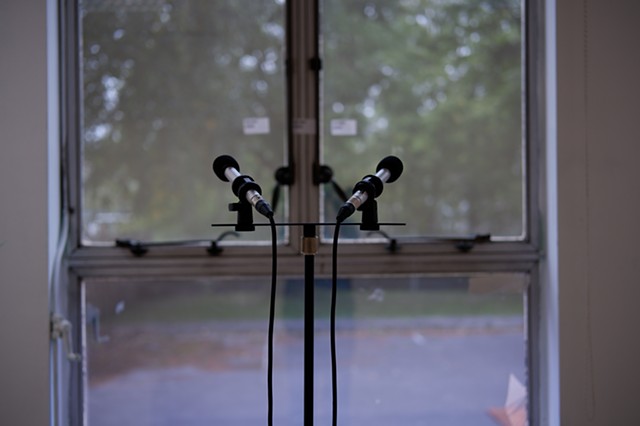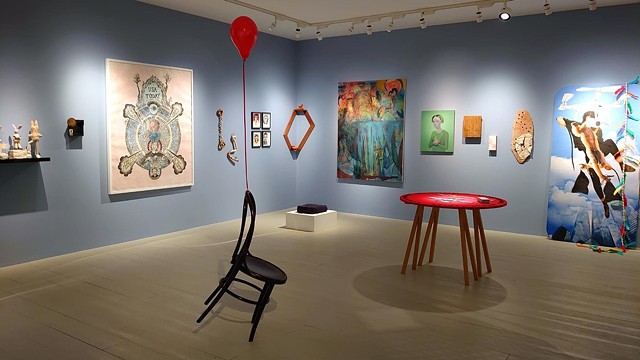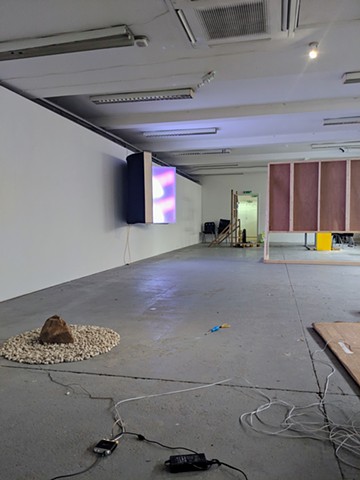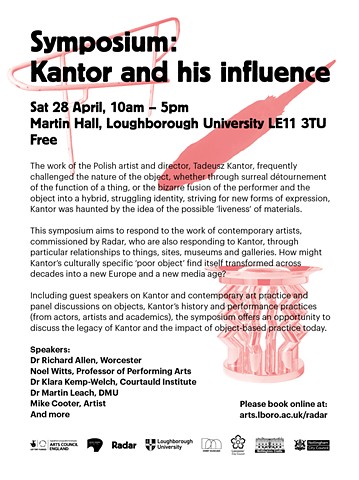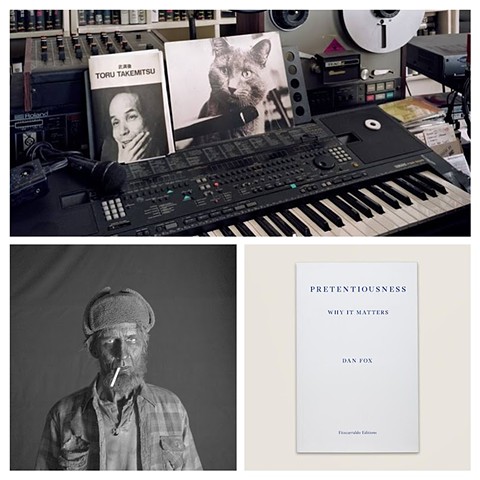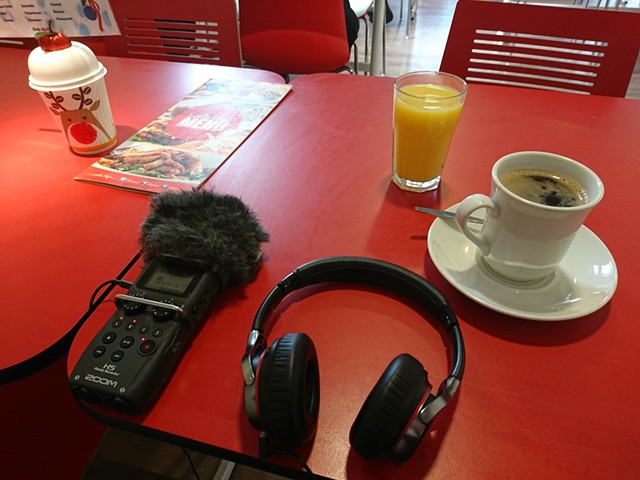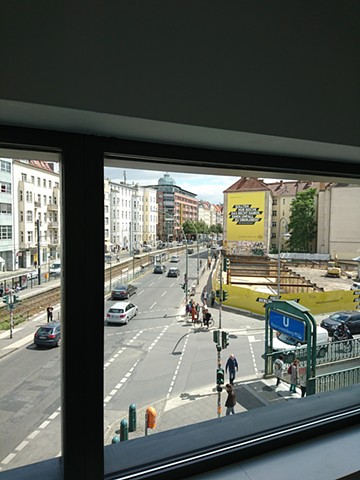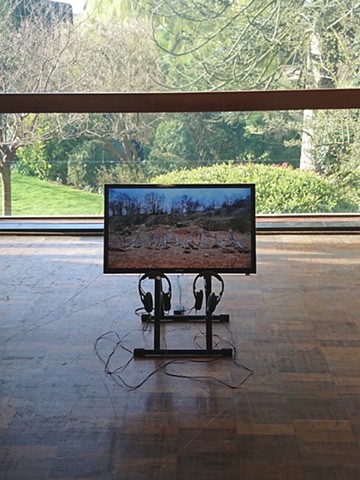Between Presence and Meaning
I have just returned from Prague (Feb 2025) where I presented a paper on 'Grid Pedagogies' as part of a wonderful symposium called Between Presence and Meaning.
The symposium asked the following question:
What are the available tools for teaching practical dramaturgy in the contemporary performance field, where each event has its own performative logic, lives in a different context, and triggers different kinds of relationships? As teachers of practical dramaturgy, we cannot provide recipes: in devising things “work” or “don't work” depending on the context they are in; each performance provides different unfolding, timing, landscape. If dramaturgy is “unfolding of the performance for the audience” as Behrndt and Turner write in their book ´Dramaturgy and Performance´ (2007) - what are the strategies to teach this unfolding in the classroom? What are the tools, approaches and exercises that students need to encounter in order to be able to develop coherent performances with their own inner system, that are unique almost every time.
For my contribution, I explored how Grid Pedagogies might be used as a strategy for energising and enabling student agency and choice within the development of their theatre and performance making practices. They are used as a pedagogical method in BA Contemporary Theatre and Performance at Wimbledon College of Arts UAL (UK), a course that centres on the teaching of dramaturgy at the core of the curriculum. The grid pedagogies were developed to address the complexity of a pedagogical context that enables students to develop practices across theatre and performance modes and forms, from staging play texts and theatre making, to installations and performance art. Grid Pedagogies have enabled the creation of diverse, student centred projects, whilst still maintaining parity and learning outcomes. This paper presented two examples of how grid pedagogies function in the course: Aspect Lectures and The Scene Bank. Aspects Lectures enable students to select from a grid of options to build their lecture programme, devised from and challenging staff research interests, while The Scene Bank has been developed to create a structure that groups text and non-text based materials used on the course by a theatrical or dramatic thematic rather than by place of origin, author, chronology or location. Part of this work is published as part of my Performance Pedagogy Toolkit.
How Artists Learn: A Lexicon at The Baltic Centre for Contemporary Art
I have just returned from The Baltic Centre for Contemporary Art where I presented a Performance Lecture called How Artists Learn: A Lexicon as part of Have Some Imagination: Towards a Manifesto for Arts Education (Feb 2025), an "An international conference addressing the transformational value of creative learning for envisioning and sustaining collective futures."How Artists Learn: A Lexicon emerged from approaches to tutorial and studio practice that encourage students to learn as artists, developed through experiences of curriculum design and pedagogical development in Fine Art and Performance Making contexts in higher education. The words are a consolidation of repeated strategies used to support students when they are ‘stuck’ in not knowing, unsure about what to do next. It considers how adjectives and verbs can be used to activate, energise or slow down situations for the individual needs of a student artist and their work. Although these words have emerged from a higher educational context - and originating from my experiences as a practicing artist - the lexicon can be adapted to be applied at any level of artistic and creative learning, gesturing towards what artists might need to learn to maintain agency and radicality within contexts that prioritise commodity, employability and metrics of economic value.
Circuits of Sand and Water R&D
Summer 2023
I am currently working as a dramaturg on a headphone installation project by Prachi Khandekar called Circuits of Sand and Water. You can see a digital prototype of the project here.
We are currently in the studio working through an R&D phase, testing the relationship between headphones, objects and environments.
The project explores the wager of privacy in pursuit of data-driven utopias. It examines the foundations of AI, a technology that's built on information mined from bodies and beings.
Spectators enter an apartment and piece together the story of its resident: a woman who watches neighbours from her window during the pandemic. Her desire to analyze the neighbours is complicated by her innate empathy. She finds herself unable to function like an algorithm, and questions whether this makes her superior or inferior to the technologies built to serve us.
The installation resembles an open-world game, in which you can collect snippets of the protagonist’s monologue by interacting with objects in her home. As you navigate deeper, you will hear what it’s like to be a human stuck between animal instincts and digital impulses.
Developed with support from Canada Council for the Arts and CALQ.
Shock Corridor at Bricks Bristol
I am currently working on a sound installation called Shock Corridor at Bricks Bristol. The installation that will engage with the RELAY project space at St Anne's as a site specific context. The installation will use the 24m length of the space and the aspect of the windows onto St Anne’s, to create a sonic landscape that frames the story of a gigantic alien cloud that appears above the earth, blocks out the sun and tries to suffocate the planet. Based on Frank Hoyles’ 1957 Science Fiction novel The Black Cloud, the narrative will use field recordings and site-specific research to transform the space into a speculative ‘corridor’ within a scientific building in which a communication apparatus attempts to make contact with the cloud that appears to have an agency of its own, transforming St Anne’s into a landscape of ecological disaster.
You can read more about the project and the opening of the event in November 2021 on the Bricks Website
The Magician's Apparatus
I am delighted to have been asked to contribute an essay to the exhibition The Collector's Room at JGM Gallery in London, curated by Karen David.
The Collector’s Room sees JGM Gallery transformed into a parlour room of a collector with a leaning towards illusion, stage magic and the escapologist Harry Houdini. In this room we encounter artworks such as spirit levels, levitations, gospel magic props, tarot cards, portraits of magicians, antique keys, handcuffs, sword boxes, escape trunks, magic wands, smoke, and mirrors. - From the JGM Website.
My essay is called The Magician's Apparatus and focuses on an encounter I had with a waxwork double of Paul Daniels at Wookey hole Caves. It considers the central operation of the magicians’ craft: employing a decoy to misdirect, opening up the space between fact and fiction, the real and the made up. When watching a magic trick, the audience is knowingly placed at the centre of a conceit, an illusion that they are both complicit in but also kept separated from. A magician's audience always knows that the trick is not showing us what is actually happening - showing the spectator the mechanism of the illusion - but it is pretending to do that thing. Like the waxwork double, the magic trick is a simulation of reality that is always slightly distorted, always off-centre, always a theatrical manifestation of the real.
You can find out more about the exhibtion here.
Image: Exhibition View by Karen David.
Scratch Lab Residency Bristol
I have just completed a short residency at the wonderful Caraboo Projects in Bristol. I developed a short audio work called Rock Ballard using plastic rock speakers, ornamental gravel and a digital print. You can read more about it here.
Presented as part of Scratch Lab with artists Christopher Earley, Frances Kelly, Happynings and Sam Smyth. Curated by Caraboo Projects.
Weird Lectures - Coming Soon
What does it really mean to call something weird?
Weirdness is everywhere; from Donald Trump’s Hair to the exploits of Potato the tiny cat on youtube; from the spectacle of Robbie Williams giving the middle finger to the crowds at opening of the Fifa World Cup in Russia to the constantly shifting perceptions of the Brexit experiment. It tumbles around the everyday like a perpetual thing on the doorstep. As a form of affect - a sensation - the weird captures a simultaneous unease and desire to laugh, it picks up the mantel from ‘the uncanny’ and ‘the surreal’ as a way of describing something at odds with reality, a tilting of the known. These ideas were introduced by Mark Fisher in The Weird and the Eerie (2016). He took the origins of the word from the fictions of H.P Lovecraft and extend it as a way of describing encounters with the world.
Drawing upon Mark Fisher’s ideas, this series of short performance lectures, weirdness is brought forward and exposed. Weird Objects, Weird Sounds, Weird Events, and Weird Politics. It draws upon films, paintings, novels, events, and memes to expose the weird is as a condition, an affect, of aesthetic experience. In this way, the weird contains a specific relationship to art making and the ways it exposes experiences that are constantly at odds with the world, always yearning - in terror - after a stable reality.
The Killers at Mayfest 2018
I have just finished a sell out run of a site-specific performance The Killers at Mayfest in the Regent Fish and Chip Restaurant in Weston-super-Mare.
Here is a quote from the review in Exeunt Magazine:
"As much as the joy of thinking it is also the joy of not knowing things, of being at the edge of something strange, complex and mysterious – it’s the same feeling I get when watching Twin Peaks or reading bizarre conspiracy theories. It is the sense that there isn’t necessarily anything at the centre, no grand truth that it is our task to figure out, meaning we feel more free to follow the threads of meaning wherever they take us."
Full review can be found here.
It also received a very thoughtful, engaged and critical review from Bristol 247:
"The key to Lost Futures is that it is an analysis of the time-loop in the late ’70s/early ’80s British TV show Sapphire and Steel. In terms of Richard Allen’s experience, the primary (murder) story was only ever the figment of a child’s imagination after watching too many TV murder serials: whereas the diner, the chip sticks, the Vimto, even the impossible number of woopee cushions inflated (but never squashed) – those things were real. We were effectively inhabiting a memory palace of Allen’s childhood. No wonder the familiar had more dramatic weight."
Full review can be found here.
Kantor and his Influence Symposium
I will be presenting a talk called 'Laughing with Kantor' at this symposium at Radar Loughborough in April. Talk postponed This talk has been rescheduled to autumn 2018. I will put up the exact date when it is confirmed.
MAYK Thought Residency Reference list
In December 2017 I undertook a Thought Residency with MAYK. The archive of these thoughts can be found here.
Here are links to the references to materials I make throughout the thoughts:
Thought 1
Alan Partridge: Why, When, Where, How And Whom? (2017).
Thought 2
East 17 - Stay Another Day.
Thought 3
Bourton-on-the-Water Model Village.
Emily Speed.
Thought 4
Stage Fright, Animals, and Other Theatrical Problems (2009) -Nicholas Ridout.
Ai Weiwei Speaks with Hans Ulrich Obrist (2016).
Thought 5
Predator (1987) Dir. John McTiernan.
Thought 6
Anthology Resource Vol. 1 - Dean Hurley. Sound Effects and music from Twin Peaks: The Return.
Thought 7
My article on Katrina Palmer and 'Theatrical Latency' (2016).
Thought 8
On Pretentiousness: Why it Matters (2016) - Dan Fox.
Thought 10
Studio: Remembering Chris Marker (2017) - Adam Bartos & Colin MacCabe.
December Thought Residency with MAYK
Throughout December (2017), I will be undertaking a thought residency with MAYK. I shall be sharing thoughts, ideas, insights and reflections on what I am making and thinking throughout the month. I start in a Little Chef car park and talk about Alan Partridge, East 17, and Model Villages.
Thought Residencies offer a brief holiday from the mantle of your own thoughts and give you the opportunity to unwind over a brief interlude with some of our most interesting performance creators.
Each month, we invite an artist to join us in our thought-space. In turn, we invite you to listen to their thoughts. It is completely free and digitally intimate. (MAYK website)
All of the thoughts will be uploaded here.
Phantom Stages at Hidden Lines of Space Berlin
I have just returned from Berlin where I presented a performance lecture called 'Phantom Stages: Floor Plans as Affect Machines' as part of the exhibition Hidden Lines of Space at the Kunstverein am Rosa-Luxemburg-Platz. The exhibition is part of a larger research project initiated by Annette Hans & Julia Horstmann that investigates the format and concept of the floor plan. Featuring work by Alice Aycock, Fran Cottell & Marianne Mueller, Hella Gerlach, Julia Horstmann, Emma Waltraud Howes, Jonas von Ostrowski, Mirjam Thomann, and Moi Tran.More about the exhibition and project can be found here.
Ricochet at Sonic Actions Brighton
I presented a new sound installation called Ricochet as part of Sonic Actions in Brighton (24/05/17), alongside work by Daniel W J Mackenzie, Zephan Knichel, Joshua Legallienne, and Daniel Alexander Hignell. The work was installed in an underground car park on Chapel Street, underneath St Jame's House in the city centre, staging a Mexican Standoff with cap guns. You can read more about the work here. Sonic Actions is a series of site based walks curated by United Untitled, bringing sonic arts practice into public spaces as an opportunity to experience sound art outside of the gallery context.The Weird World of Donald Trump at Glasgow Buzzcut
I am presenting a short video essay (above) at Glasgow Buzzcut on Wednesday 5th April called The Weird World of Donald Trump. It argues how America’s current encounter with the world of Donald Trump is akin to the weird realism of H.P Lovecraft, drawing upon Mark Fisher’s account of the weird - defined by Lovecraft’s fiction - as an encounter that can encompass grotesque sensations of fear when experiencing an object or being that shapeshifts and transforms itself. The weird, in this sense challenges and creeps into the perceived safety and certainty of everyday life to frightening political effect.The essay will present a short reading of Trump’s world against the philosophy of Lovecraft’s weird as a way of thinking about how the encounter with it might be understood and challenged. If a community can find a language to describe the sensation of what they are experiencing then there is hope that it can be collectively overcome, claiming a space within the weird, facing up to the thing on the doorstep.
The Bones of Breakheart Quarry at SSSB Southampton
I presented The Bones of Breakheart Quarry a 3 minute looped video installation at Skeletons, Stories and Social Bodies, a three day interdisciplinary conference hosted by the Department of Archaeology and the Centre for Learning Anatomical Sciences at the University of Southampton (24th - 26th March 2017).Set in Breakheart Quarry (Dursley, UK), the film depicts the arms of buried skeletons are raising up from the ground in response to the sound of a single Marshal amplifier. Breakheart Quarry is owned by the UK Nuclear Decommissioning Agency and appears like an alien landscape, populated with silver birch trees, ancient layers of cotswold stones and red twigged bushes. The work plays on the theatricality of prop plastic bones from Hammer Horror movies, and the fabricated images of mass numbers of the undead coming back to life. The skeleton arms, suggest at the animation of a site mysteriously trapped in an unspecified nuclear past as an absurd ecology of bones and rock, soundtracked by Slayer’s Skeletons of Society.



